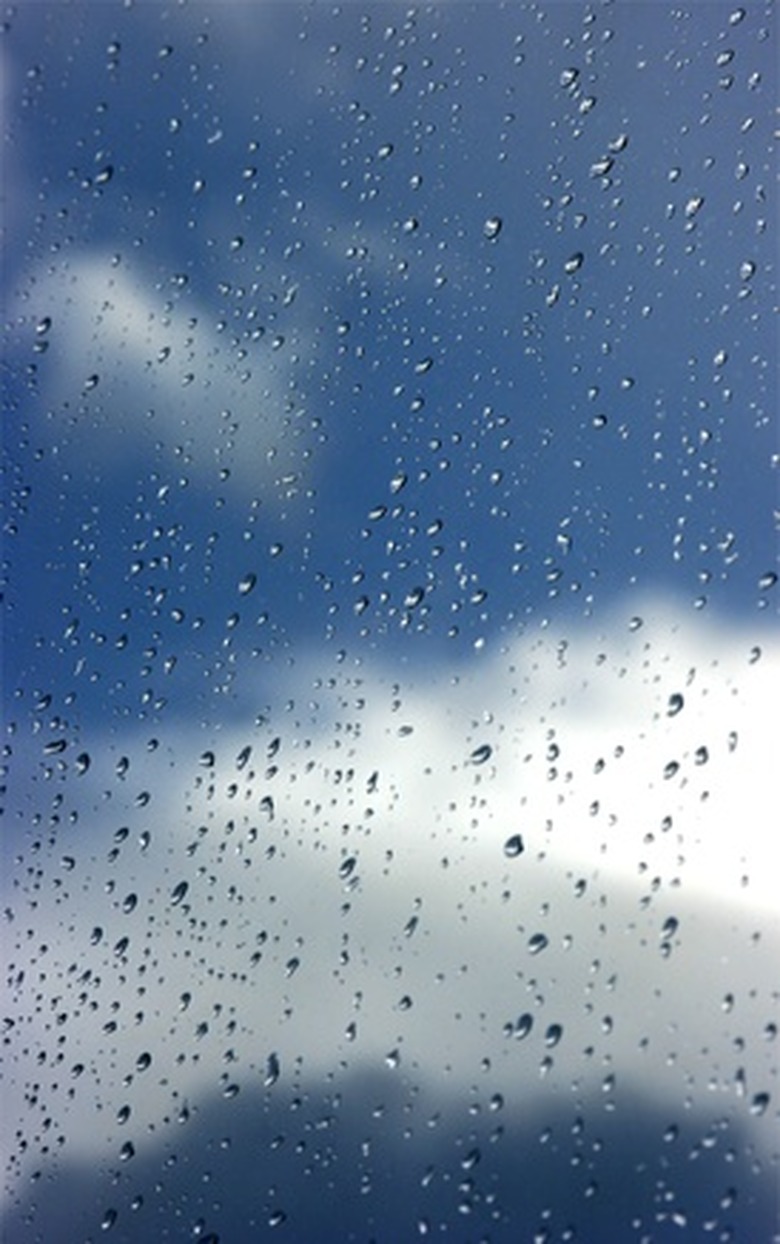Glass Barometer Filling Instructions
A glass barometer, sometimes called a water barometer, is a simple tool for measuring air pressure. It was invented in the 16th century and fascinated the German writer and philosopher Johan Wolfgang von Goethe, who used one extensively to measure local weather conditions. It consists of a teapot-shaped glass vessel that is completely closed except for the spout. Air pressure causes the water in the spout to rise and fall, and if the pressure is extremely low, such as just before a tornado or hurricane, water can actually come gushing out of the spout. A glass barometer is also known as a storm glass.
How Does a Glass Barometer Work?
How Does a Glass Barometer Work?
The water level inside of a water barometer completely covers the outlet where the spout meets the body of the barometer. A small volume of air sits inside the vessel, creating a small reservoir of water inside the spout. Because the spout is open to the atmosphere, the surrounding air applies pressure to the water in the spout, which causes the water levels in the vessel and spout to rise and fall by a small amount. Because the air in the vessel is enclosed, the air compresses and decompresses with the rise and fall of the water level, creating, in effect, a standard by which to compare the surrounding air pressure.
If the outside air pressure is higher than the air pressure inside the vessel, the water level in the spout will go down because the increased air pressure pushes down against the water in the spout. At the highest barometric pressure, the water that was in the spout may disappear into the vessel. Conversely, the spout level will rise when the surrounding air pressure is low, because the higher pressure of the air inside the vessel pushes against the water in the vessel, which in turn pushes up the water in the spout; the water in the spout faces less resistance and pressure from the outside air. If the outside air pressure is extremely low, water can actually spill from the spout.
How to Fill a Water Barometer
How to Fill a Water Barometer
When you fill the vessel with water, it's important to maintain the air inside at the current atmospheric pressure to provide a standard against which to measure future fluctuations. To do this, you need to introduce water without letting air escape. There are two ways to do this. You can submerge the vessel in water or, preferably, you can inject water with a syringe.
Things Needed
- 1-quart jar
- Food coloring
- Dental syringe
- Plastic tubing
1. Prepare the Water
Fill a quart jar with distilled water and add a little food coloring to make the water level easier to see inside the vessel.
2. Prepare the Syringe
Dip a large syringe into the water and pull back the plunger to fill it. (Look for dental syringes meant for rinsing teeth and gums with warm water.) Push a 24-inch length of plastic tubing onto the end of the syringe and insert the other end of the tube into the spout of the water barometer. Push it in until it enters the vessel.
3. Turn the Water Barometer Upside Down and Fill It
Depending on the configuration of the spout to the vessel, you may also have to turn the vessel in its side. Inject enough water to fill the vessel halfway. If you have to refill the syringe, remove the end of the tube from the syringe – don't pull the other end out of the vessel. Keep the vessel inverted while you refill the syringe.
4. Right the Water Barometer
Remove the tube from the vessel when you've injected enough water. Turn the vessel right side up, if needed, and ensure there is enough water to cover the spout inlet inside the vessel. If not, repeat the filling procedure from the beginning.
5. Hang the Glass Barometer or Set It on a Table
Note the water level in the spout. You may want to draw a line to mark it. When the water is above this line, the air pressure is lower than when you filled the vessel, and when the level is below it, the air pressure is higher.
Cite This Article
MLA
Deziel, Chris. "Glass Barometer Filling Instructions" sciencing.com, https://www.sciencing.com/glass-barometer-filling-instructions-7596463/. 30 July 2018.
APA
Deziel, Chris. (2018, July 30). Glass Barometer Filling Instructions. sciencing.com. Retrieved from https://www.sciencing.com/glass-barometer-filling-instructions-7596463/
Chicago
Deziel, Chris. Glass Barometer Filling Instructions last modified March 24, 2022. https://www.sciencing.com/glass-barometer-filling-instructions-7596463/
